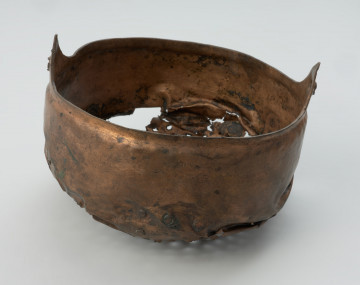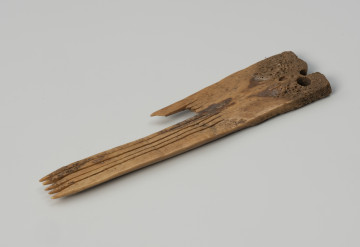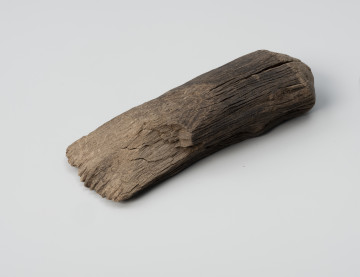
Colander
601 — 1000
National Museum in Szczecin
Part of the collection: Middle Ages
The cauldron found on the bottom of the Dzwina River dates back to the 7th-10th centuries, and it constitutes a rare archaeological find. Such vessels were recorded as early as in the La Tène period – from 400 BC to the turn of the eras. They were made by specialised craftsmen, who had proper knowledge of metallurgy. The cauldrons were made of copper enriched with zinc, tin and lead. The material was then subjected to a long shaping process, during which the metal was flattened with blunt tools, until the resulting vessel had the right shape and wall thickness. In the early medieval period, such vessels were highly valuable – so much so that if one got damaged during its use, people would attempt to repair the damage numerous times. A good example of this phenomenon is the colander found during the same excavation, which was made out of a cauldron that had been repaired several times. The cauldrons were undoubtedly used for cooking food. They served their role on land, in households, as well as during distant sea expeditions. They could be placed directly in the fireplace or suspended from a special structure placed over the hearth. The Wolin cauldron has a volume of 8 litres.
Grzegorz Durdyń
Author / creator
Dimensions
cały obiekt: height: 15.5 cm
Object type
vessel (container), cauldron
Technique
peening
Origin / acquisition method
field research
Creation time / dating
Creation / finding place
Owner
Muzeum Narodowe w Szczecinie
Identification number
Location / status

601 — 1000
National Museum in Szczecin

1176 — 1200
National Museum in Szczecin

1201 — 1225
National Museum in Szczecin
DISCOVER this TOPIC
National Museum in Lublin
DISCOVER this PATH
Educational path